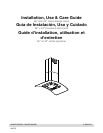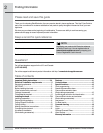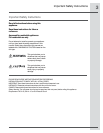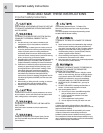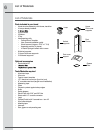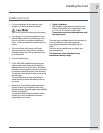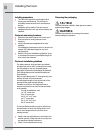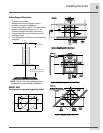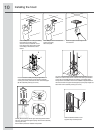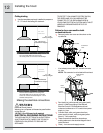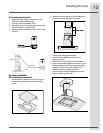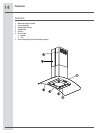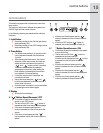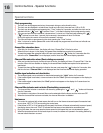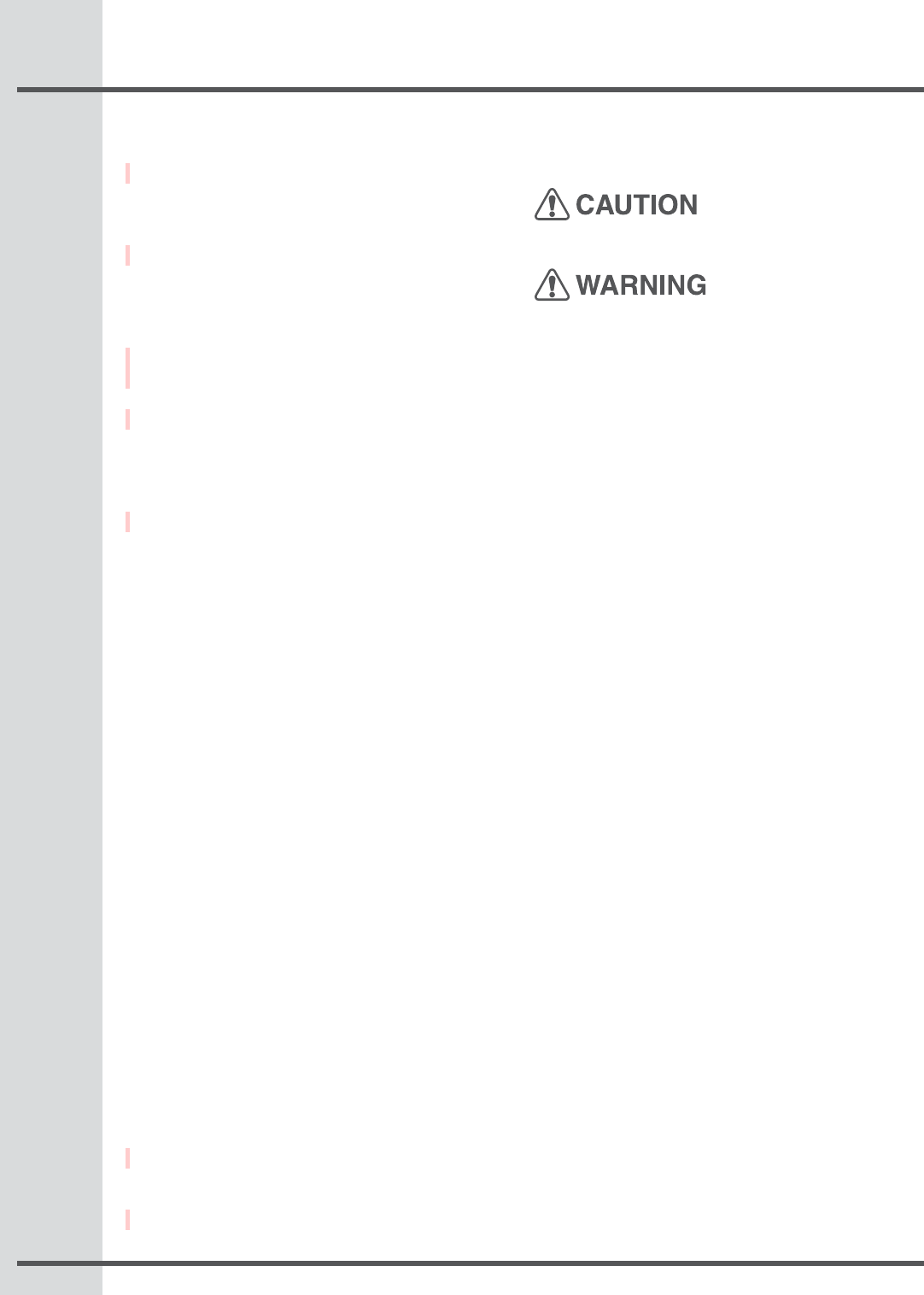
8
Installing the hood
Installing preparation
The vent hood should be on site before nal
framing and wall nishing. This will help to
accurately locate the duct work and electrical
service.
Installation will be easier if the vent hood is
installed before the cook-top and countertop are
installed.
Ductwork and wiring locations:
Determine the exact location of the vent hood.
Plan the route for venting exhaust to the
outdoors.
Use the shortest and straightest duct route
possible.
For satisfactory performance duct run should not
exceed 100’ equivalent length for any duct
congurations.
Refer to “Ductwork installation guidelines” chart
to compute the maximum permissible length fo r
duct runs to the outdoors.
Ductwork installation guidelines
For safety reasons, ducting should vent directly
outdoors (not into an attic, underneath the house,
into the garage or into any enclosed space).
Keep duct runs as short and straight as possible.
Duct ttings (elbows and transitions) reduce air
ow eciency.
Back to back elbows and “S“ turns give very poor
delivery and are not recommended.
A short straight length of duct at the inlet of the
remote blower gives the best delivery.
Transition to duct from the integral blower or
remote duct transition as close to the downdraft
as is possible.
In order of preference, use
1st. 10” round duct
2nd. 8” round duct
3rd. 3-1/4” x 14” duct
4th. 7” round duct
5th. 3-1/4” x l0” duct
6th. 6” round duct
The use of exible metal round duct should only
be used when no other duct tting exists. Limit
use to short lengths and do not crush when
making corners.
Install a wall cap with damper or roof cap at the
exterior opening. Order the wall or roof cap and
any transition needed in advance.
Use 8” round metal ductwork only.
•
•
•
•
•
•
•
•
Removing the packaging
Remove the carton carefully. Wear gloves to protect
against sharp edges.
Remove the protective !lm covering the product
before putting into operation.



